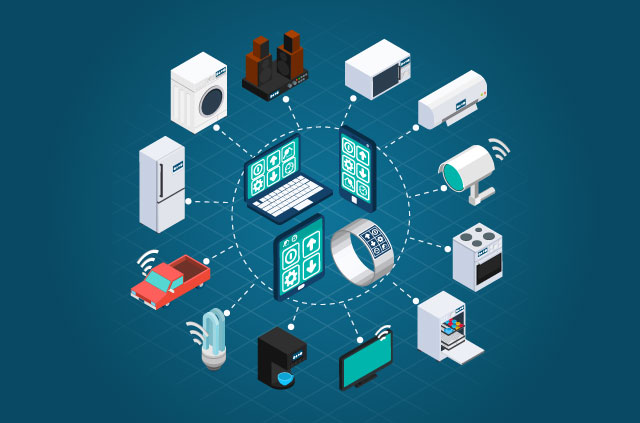World of Industry 4.0
Industry 4.0 is the subset of the fourth industrial revolution that concerns the industry. The fourth industrial revolution encompasses areas that are not normally classified as an industry, such as smart cities, for instance.
Although the terms “industry 4.0” and “fourth industrial revolution” are often used interchangeably, “industry 4.0” factories have machines which are augmented with wireless connectivity and sensors, connected to a system that can visualize the entire production line and make decisions on its own.
In essence, industry 4.0 is the trend towards automation and data exchange in manufacturing technologies and processes which include cyber-physical systems (CPS), the internet of things (IoT), industrial internet of things (IIOT), cloud computing, cognitive computing, and artificial intelligence.

The concept includes:
- Smart manufacturing
- Smart factory
- Lights out (manufacturing) also known as dark factories
- Industrial internet of things also called the internet of things for manufacturing.
Industry 4.0 fosters what has been called a “smart factory”. Within modular structured smart factories, cyber-physical systems monitor physical processes, create a virtual copy of the physical world and make decentralized decisions. Over the Internet of Things, cyber-physical systems communicate and cooperate with each other and with humans in real-time both internally and across organizational services offered and used by participants of the value chain.
The determining factor is the pace of change. The correlation of the speed of technological development and, as a result, socio-economic and infrastructural transformations with human life allow us to state a qualitative leap in the speed of development, which marks a transition to a new time era.
Design principles and goals
There are four design principles in Industry 4.0. These principles support companies in identifying and implementing Industry 4.0 scenarios.
- Interconnection: The ability of machines, devices, sensors, and people to connect and communicate with each other via the Internet of Things (IoT) or the Internet of People (IoP)
- Information transparency: The transparency afforded by Industry 4.0 technology provides operators with vast amounts of useful information needed to make appropriate decisions. Inter-connectivity allows operators to collect immense amounts of data and information from all points in the manufacturing process, thus aiding functionality and identifying key areas that can benefit from innovation and improvement.
- Technical assistance: First, the ability of assistance systems to support humans by aggregating and visualizing information comprehensively for making informed decisions and solving urgent problems on short notice. Second, the ability of cyber-physical systems to physically support humans by conducting a range of tasks that are unpleasant, too exhausting, or unsafe for their human co-workers.
- Decentralized decisions: The ability of cyber-physical systems to make decisions on their own and to perform their tasks as autonomously as possible. Only in the case of exceptions, interferences, or conflicting goals, are tasks delegated to a higher level.
Industry 4.0 envisions environmentally-sustainable manufacturing by having green manufacturing processes, green supply chain management, and green products.
Components of Industry 4.0

“Industry 4.0” is an abstract and complex term consisting of many components when looking closely into our society and current digital trends. To understand how extensive these components are, here are some contributing digital technologies as examples:
- Mobile devices
- Internet of Things (IoT) platforms
- Location detection technologies
- Advanced human-machine interfaces
- Authentication and fraud detection
- 3D printing
- Smart sensors
- Big data analytics and advanced algorithms
- Multilevel customer interaction and customer profiling
- Augmented reality/ wearables
- Fog, Edge and Cloud computing
- Data visualization and triggered “real-time” training
Mainly these technologies can be summarized into four major components, defining the term “Industry 4.0” or “smart factory”:[
- Cyber-physical systems
- IoT
- Cloud computing
- Cognitive computing
With the help of cyber-physical systems that monitor physical processes, a virtual copy of the physical world can be designed. Thus, these systems have the ability to make decentralized decisions on their own and reach a high degree of autonomy (for more information, see “Industry 4.0 characteristics). As a result, Industry 4.0 networks a wide range of new technologies to create value.
References
- Cover image: https://www.phoneworld.com.pk/wp-content/uploads/2019/05/Industry-4.0.png. Retrieved November 24, 2019.
- Wikipedia “Industry 4.0”. https://en.wikipedia.org/wiki/Industry_4.0#Terminology. Retrieved November 24, 2019.
- Forbes “What Everyone Must Know About Industry 4.0”. https://www.forbes.com/sites/bernardmarr/2016/06/20/what-everyone-must-know-about-industry-4-0/#7ba6165b795f. Retrieved November 26, 2019.
